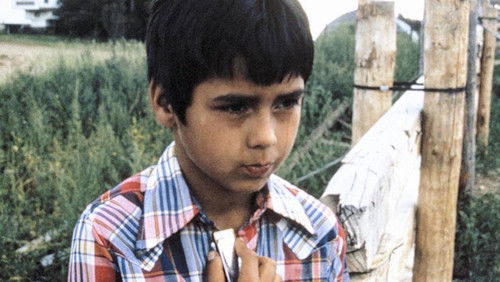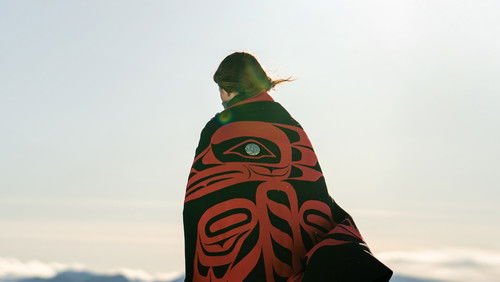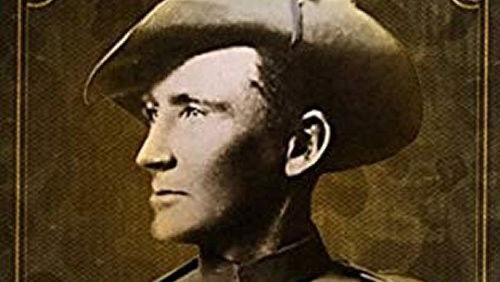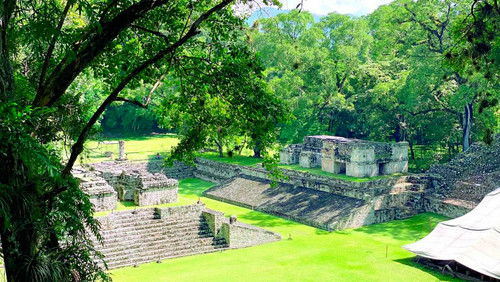Highline (2020)
68KHighline: Directed by Chris Smead. With Joe Valesko, Tom Flanigan, Ashley Braden, Benny Braden. Ten days. Five friends. One trek across Utah’s Uinta Highline Trail. Watch as the ancient history of the trail is woven together with the personal history of each of the hikers as they get back in touch with the world, and each other.
“Never before, it seems, have so many been afflicted with so much. Ours seems to be the age of the psychic trauma: PTSD, ADHD, depression, anxiety, addiction, suicidal ideation, and a general malaise toward life, among many, many others. Why is this era, renowned for its many technological and medical marvels, becoming known almost as much for its epidemic of mental, emotional or psychological broken-ness? Many answers have been suggested, from modern humanityu0026#39;s greater understanding of the maladies to the relentless and high-stakes pace of modern life. Perhaps the answer is far more simple, and has been in front of our noses all along. Perhaps this rise of existential unhappiness is a result of our separation from wild places.u003cbr/u003eu003cbr/u003eThat is one of the key themes in Chris Smeadu0026#39;s excellent new film, Highline, newly released by Outmersive Films. Using the backdrop of northeastern Utahu0026#39;s majestic Uinta Mountains, Smead weaves a tale of five friends (all veterans of the Appalachian Trail, the Pacific Coast Trail and many other u0026quot;long-trailu0026quot; excursions) tackling the Highline Trail, a seldom-hiked traverse along the Uinta Mountain crest. The film, like the trail it follows, is massive in scope and splendor.u003cbr/u003eu003cbr/u003eAll long-trail hikes are episodes in endurance, but the Highline Trail is especially daunting. The entire hike covers approximately 104 miles from end to end, most of it over 10,000 feet. It presents no fewer than nine passes over 11,000 feet (and some as high as 12,600 feet), and the total vertical feet climbed is off the charts. Hikers face the constant threat of afternoon thunderstorms which, when caught above tree-line, create a significant risk of deadly lightning strikes to all exposed. The remoteness of the trail means that hikers are never comfortably close to civilization, and exit strategies are rare and risky.u003cbr/u003eu003cbr/u003eBut the travails of the Highline Trail are overwhelmed by the spectacular beauty of the High Uintas. The altitude takes oneu0026#39;s breath away, but then so do the views of towering peaks and vast river basins. One of the technical achievements of the Highline film is the way Smead conveys the beauty and grandeur of the Uintas with limited camera options. Unable to use drones (a designated wilderness rule), Smead and his fellow film makers had no choice but to make the hike with the five cast members, and to put in extra miles to get the perfect shot angles. It is often said that pictures do not do wild places justice, but Smead and company do a remarkable job of visually presenting the indescribable.u003cbr/u003eu003cbr/u003eThe Uintas are an underrated treasure in the mountaineering community. They are the most prominent east-west mountain range in the lower 48 states, and this vast swath of alpine acreage comes as a surprise to most who investigate them for the first time. But the Uintas also play an important role in the history of the American West, from the original post-ice age tribes, to fur-trapping mountain men, to enterprising business dreamers, to wilderness afficionados. Smead does a good job weaving this history into the majestic nature of the mountains themselves.u003cbr/u003eu003cbr/u003eDue disclosure: I am a Uinta Mountain addict. I abscond to the Uintas every chance I get, and it never seems to be enough. I love the wild, untrammeled sections of that mountain range with my whole soul, and I have hiked much of the Highline Trail (but not all . . . yet) depicted in the film. It was fun to watch as the hikers move along the entire trail from east to west, and to share with my sons the familiar sections we have previously hiked. The views from passes we know brought back cherished memories of 50-milers past, and so a sense of nostalgia gripped me as I watched my Uintas being discovered through fresh eyes (along with weary feet and backs).u003cbr/u003eu003cbr/u003eBut where Highline really transcends typical backpacking/outdoor films is in its treatment of the five hikers. Just enough of their individual stories are included to make us care for each of them, and to notice a common thread. Each of these hiking legends (Joe Valesco, Matt Favero, Steve Kaiser, Will Wood and Benny Braden) has logged thousands of miles across some of the most storied trails in the world. Several of them make their living in the outdoor industry. But each man has, in some way, been broken at some point by life, by circumstance, or by individual choice. And each has turned to the mountains to find healing. Their stories, including their dark times and the light they have found on the trail, turn a glorious travel film into something much more engaging and meaningful.u003cbr/u003eu003cbr/u003eA growing body of scientific evidence is proving what backpackers and mountaineers have always instinctively known: time spent in wild places heals spirits, resets minds and strengthens resolves. The sights, sounds and rhythms of the trail reach human beings in ways that modern medicine and psychiatry cannot (as important as the contributions of those disciplines continue to be). In his Audubon Award-winning book, Last Child in the Woods, Richard Louv coined the phrase u0026quot;Nature-Deficit Disorderu0026quot; to present what he considers to be a major cause of mental and emotional distress in 21st century human beings. Louv argues that our societal disconnect with wild places, starting as children in our hyper-scheduled, e-mail, text and video-game-addicted world, has robbed us of the healing and developmental benefits of outdoor time. In her thought-provoking podcast, Florence Williams compiles more recent research that demonstrates what she and other researchers call u0026quot;The Three Day Effect,u0026quot; in which three consecutive days in the wilderness has been shown to calm and even reset the brain. New studies seem to come out every month confirming these hypotheses.u003cbr/u003eu003cbr/u003eThe Highline film doesnu0026#39;t tackle this science, nor should it. Instead, Highline gives us unmistakable anecdotal evidence of natureu0026#39;s healing power as testified by our five hikers, along with fascinating geological and historical context surrounding a truly unique mountain range. And the film conveys that information amidst the backdrop of unmatched, seldom-visited, awe-inspiring alpine beauty. This film will fuel rather than quench your cabin fever. Indeed, you cannot watch Highline without longing to see the Uinta Mountains in person (for either the first or the hundredth time). Highline is as well-made and deeply moving a film as I have seen in a long, long time.”









